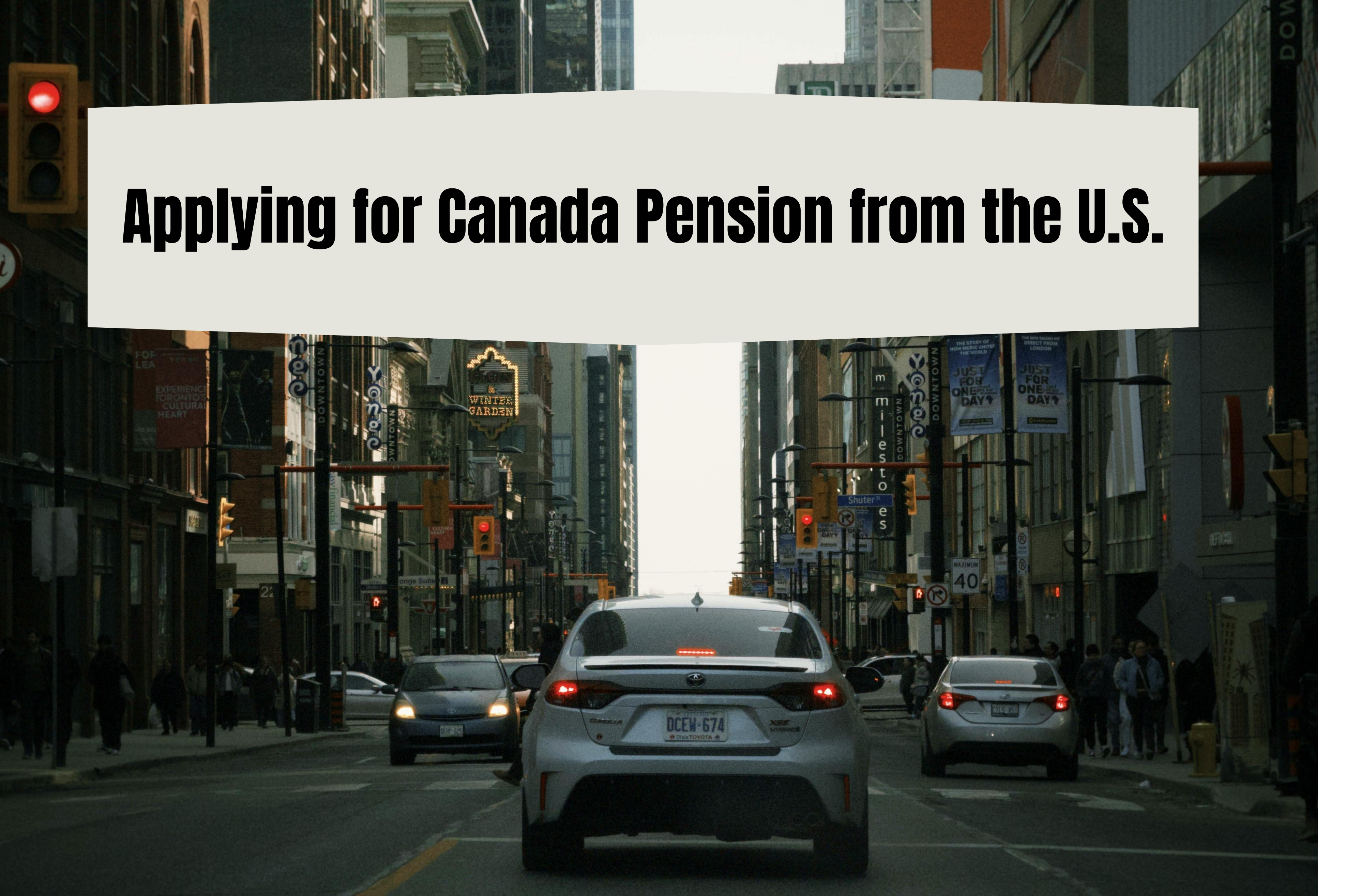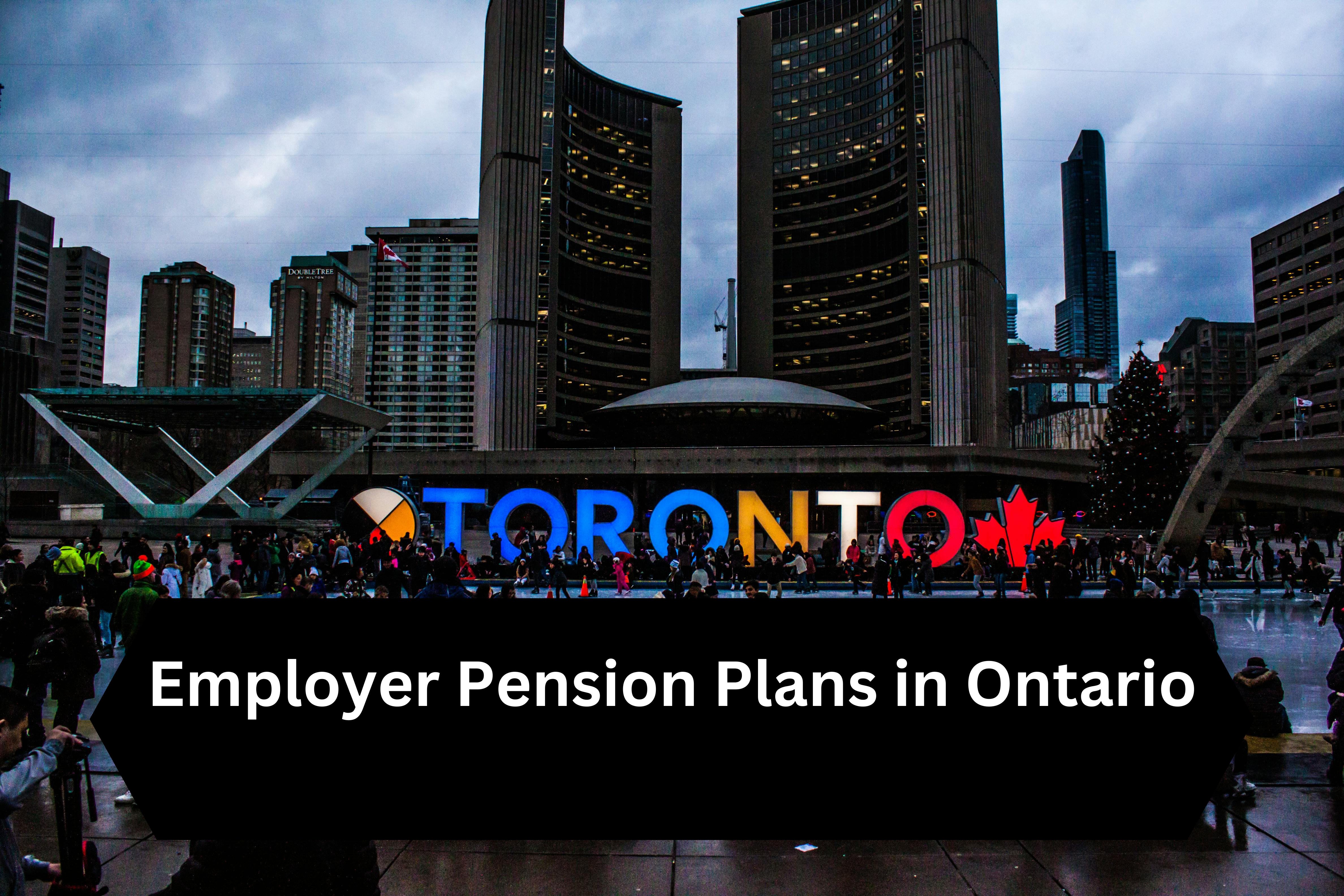Retiring in Ontario: The Ultimate Guide

Whether you're a Canadian citizen, a permanent resident, or just visiting temporarily, retirement is a fresh start. After years of working, supporting your community, and raising a family, it’s your time to focus on what makes you happy. If you’re an active adult looking for a mix of city excitement, rich culture, and stunning nature, Ontario is one of the best places to retire in Canada. In this post, we’ll discover;
Table of Contents
- What is the Cost of Living for Retirees in Ontario?
- Retirement income sources for retirees in Ontario
- How Does Healthcare Work for Retirees in Ontario?
- Best Part-Time Jobs for Retirees in Ontario
- How Are Pensions and Retirement Income Taxed in Ontario?
- Hobbies and Activities for Seniors in Ontario
- Travel Destinations for Ontario Retirees
- Checklist for a Successful Retirement in Ontario
What is the Cost of Living for Retirees in Ontario?
The cost of living in a retirement home in Ontario varies depending on the location, services, and amenities provided. According to CMHC’s Senior Housing Report, the average monthly cost is about $3,999. However, prices can range from as low as $2,500 to as high as $6,000 per month, depending on the level of care and comfort you choose.
In addition to retirement home costs, retirees also have regular living expenses, such as food, transportation, healthcare, and entertainment. Retirement advisors estimate that, on average, seniors spend around $2,534 per month on these expenses, adding up to approximately $30,408 per year. Source [ CMHC’s, ]
Below are recent reports to provide insights into the cost of living for retirees in Ontario in 2024:
Healthcare of Ontario Pension Plan (HOOPP) 2024 Canadian Retirement Survey: This survey highlights that persistent high interest rates and rising living costs have significantly impacted Canadians' ability to save, threatening retirement preparedness. Notably, 26% of unretired Canadians expect to continue working during retirement to support themselves, and 49% haven't set aside any retirement savings in the past year. The survey also indicates that individuals with workplace pensions are better prepared for retirement.
Ontario Pension Board (OPB) Cost of Living Adjustment (COLA): For retirees receiving pensions through OPB, there was a 2.7% increase in benefits starting January 2025. This adjustment aims to protect pensions against inflation, ensuring that retirees' purchasing power remains stable. For those who began receiving pensions in 2024, the increase is prorated based on the number of months the pension was received.
CTV News Report on Cost-of-Living Challenges: A December 2024 report discusses how many seniors are adjusting their retirement plans due to rising living costs. Some are sacrificing their retirement plans to assist younger family members struggling with expenses, indicating a broader financial strain across generations.
Government of Canada's 2024 Fall Economic Statement: The statement provides examples of financial benefits for various household types. For a multi-generational household in Ontario, the government estimates approximately $19,500 in savings and additional benefits in 2024. This includes enhancements to Canada Student Loans and Grants, the Canadian Dental Care Plan, and the Canada Workers Benefit. While this example isn't exclusively about retirees, it offers insight into potential financial support available to households that may include retirees.
Also read Top 10 Worst Places to Retire in Ontario
Also read; Best Provinces To Retire In Canada For Retirees
Retirement income sources for retirees in Ontario
As of February 2025, the Old Age Security (OAS) pension amounts in Ontario are as follows:
- Ages 65 to 74: Maximum monthly payment of $727.67.
- Ages 75 and older: Maximum monthly payment of $800.44.
These amounts are consistent across Canada, including Ontario. Eligibility and payment amounts are determined by the federal government and are not province-specific. The OAS pension is adjusted quarterly based on the Consumer Price Index to reflect changes in the cost of living. Notably, for the January to March 2025 quarter, there was no increase in OAS benefits due to stable cost-of-living metrics.
In addition to the basic OAS pension, low-income seniors may qualify for the Guaranteed Income Supplement (GIS). For a single individual, the maximum monthly GIS payment is $1,086.88, while for couples, it varies based on combined income and OAS eligibility.
Ontario also offers the Guaranteed Annual Income System (GAINS) to provide additional financial support to low-income seniors. The maximum monthly GAINS payment is $87 for single seniors and $174 for couples, depending on their private income levels.
It's important to note that OAS benefits are subject to a recovery tax (commonly known as the OAS clawback) if a recipient's annual net income exceeds a certain threshold. For 2024, this threshold starts at $90,997, with the OAS pension being fully clawed back at an income of $148,451 for individuals aged 65 to 74, and $154,196 for those aged 75 and over.
For the most current and detailed information, refer to the official Government of Canada resources on OAS payments.
How Does Healthcare Work for Retirees in Ontario?
In Ontario, retirees have access to a publicly funded healthcare system that provides a range of services. However, certain services, such as dental care and prescription medications, may not be fully covered. To address these gaps, the province offers specific programs and has introduced recent legislative changes aimed at enhancing healthcare support for seniors.
Ontario Seniors Dental Care Program (OSDCP): As of August 1, 2024, the OSDCP provides free dental services to eligible seniors aged 65 and over. To qualify, a single senior must have an annual income of less than $25,000, while a senior couple must have a combined annual income below $41,500. This program aims to improve access to dental care for low-income seniors.
Support for Seniors and Caregivers Act, 2024: Introduced in early 2024, this legislation focuses on enhancing dementia care and support for caregivers. The Act proposes amendments to existing laws to improve services and resources available to seniors and their caregivers, reflecting the government's commitment to addressing the challenges posed by an aging population.
Guide to Programs and Services for Seniors in Ontario: Published in November 2024, this comprehensive guide offers information on various programs and services available to seniors, including healthcare, housing, and financial assistance. It serves as a valuable resource for retirees seeking to navigate the healthcare system and access essential services.
Healthcare of Ontario Pension Plan (HOOPP): HOOPP continues to expand its membership, providing retirement security for Ontario's healthcare workers. In 2024, HOOPP welcomed 33 new employers, including hospices, mental health clinics, and community service organizations, bringing the total to over 700 employers across the province. This expansion reflects ongoing efforts to enhance retirement benefits for those who have dedicated their careers to healthcare.
Best Part-Time Jobs for Retirees in Ontario
Retirees in Ontario have plenty of part-time job options that match different skills and interests. Here are some great choices:
- Consulting – Use your professional experience to offer advice in your field while enjoying flexible hours.
- Event Staff – Work at sports events or concerts as security, an usher, or in concessions, letting you earn while attending events.
- Rideshare Driver – Drive for services like Uber if you enjoy meeting new people and want to set your own schedule.
- Pet Care Services – Earn by walking dogs or pet sitting, a perfect job for animal lovers.
- Tutoring – Teach students in subjects you know well, either online or in person.
- Freelancing – Use skills like writing, graphic design, or bookkeeping to take on online projects through sites like Upwork or Fiverr.
- Retail Jobs – Work part-time in stores, helping customers and staying active.
- Home Rentals – Rent out extra space on Airbnb for extra income with little effort.
- Standardized Patient – Help train healthcare students by acting as a patient in medical programs.
- Seasonal Jobs – Take on temporary roles like working at election polling stations or during holiday events.
Also read; Best Employer Pension Plans in Ontario
How Are Pensions and Retirement Income Taxed in Ontario?
In Ontario, pensions and retirement income are subject to taxation under both federal and provincial tax systems. Here's an overview of how these incomes are taxed for the 2025 tax year:
1. Federal Income Tax Rates for 2025:
- 15%: Income up to $57,375
- 20.5%: Income from $57,375.01 to $114,750
- 26%: Income from $114,750.01 to $177,882
- 29%: Income from $177,882.01 to $253,414
- 33%: Income over $253,414
These rates apply to taxable income, which includes pensions and other retirement income.
2. Ontario Provincial Income Tax Rates for 2025:
- 5.05%: Income up to $47,630
- 9.15%: Income from $47,630.01 to $95,259
- 11.16%: Income from $95,259.01 to $150,000
- 12.16%: Income from $150,000.01 to $220,000
- 13.16%: Income over $220,000
These rates are applied to taxable income after federal taxes have been calculated.
3. Canada Pension Plan (CPP) Contributions:
- Employee Contribution Rate: 5.95% on earnings up to $67,800
- Self-Employed Contribution Rate: 11.9% on earnings up to $67,800
- Basic Exemption Amount: $3,500
These contributions are mandatory for employed and self-employed individuals and are deducted from income.
4. Registered Retirement Savings Plan (RRSP):
- Contribution Limit for 2025: $32,490
Contributions to an RRSP are tax-deductible, reducing taxable income for the year.
5. Tax-Free Savings Account (TFSA):
- Annual Contribution Limit for 2025: $7,000
- Cumulative Contribution Room (for those eligible since 2009): $102,000
While contributions are not tax-deductible, withdrawals from a TFSA are tax-free.
6. Pension Income Splitting: Retirees may split eligible pension income with their spouse or common-law partner, potentially reducing the overall tax burden. This can result in tax savings if one partner is in a lower tax bracket.
7. Old Age Security (OAS) Clawback: For high-income earners, OAS benefits may be reduced through a recovery tax. The threshold for this clawback begins at a certain income level, which is adjusted annually.
It's essential for retirees in Ontario to stay informed about current tax rates and regulations, as these can change annually. Consulting with a tax professional can provide personalized advice based on individual circumstances.
Hobbies and Activities for Seniors in Ontario
Engaging in hobbies and activities is essential for seniors in Ontario to maintain physical health, mental sharpness, and social connections. Here are some popular options:
Creative Arts: Activities such as painting, drawing, knitting, and crafting offer therapeutic benefits and a sense of accomplishment. The Aurora Seniors Centre, for instance, provides various craft and hobby sessions, including sewing groups, creative colouring, and wood carving.
Gardening: Tending to plants allows seniors to enjoy the outdoors, engage in light physical activity, and experience the joy of nurturing life. Even those with limited space can explore container or indoor gardening.
Physical Activities: Staying active is important for overall well-being. Seniors can participate in activities like walking, swimming, or specialized fitness classes designed for older adults. Many community centers offer programs tailored to varying mobility levels.
Social Clubs and Groups: Joining clubs focused on books, games, or other interests fosters social interaction and combats loneliness. The Strangway Centre in Sarnia, for example, offers a hobby shop and various programs catering to seniors.
Lifelong Learning: Pursuing new knowledge keeps the mind sharp. Seniors can enroll in courses, attend workshops, or join discussion groups on topics of interest. Many communities have resources to support continuous learning.
For more localized opportunities, it's advisable to contact nearby community centers, senior associations, or municipal offices, as they often provide calendars of events and programs tailored to seniors' interests. Also read Retirement Planning Mistakes: Must Know For Everyone
Travel Destinations for Ontario Retirees
Ontario offers a diverse array of travel destinations that cater to retirees seeking relaxation, cultural experiences, and natural beauty. Here are some top recommendations:
Niagara-on-the-Lake
Known for its charming downtown, historic sites, and proximity to numerous wineries, Niagara-on-the-Lake provides a serene retreat. Visitors can enjoy wine tours, boutique shopping, and theater performances at the Shaw Festival.
Prince Edward County
This picturesque region boasts beautiful shorelines, art galleries, and a burgeoning culinary scene. It's an excellent spot for leisurely drives, visiting local farmers' markets, and exploring Sandbanks Provincial Park.
Stratford
Famed for the Stratford Festival, this town offers a rich cultural experience with its theater productions. The scenic Avon River and quaint downtown make it a delightful destination for leisurely strolls and fine dining.
Muskoka
Often referred to as "cottage country," Muskoka is dotted with lakes and forests, providing ample opportunities for boating, fishing, and relaxing by the water. The region also features luxury resorts and spas for a pampered getaway.
Ottawa
Canada's capital city offers a blend of cultural attractions, including national museums, historic landmarks like Parliament Hill, and scenic pathways along the Rideau Canal. Ottawa's vibrant markets and festivals add to its appeal.These destinations combine comfort, accessibility, and a range of activities suited to varied interests, making them ideal for retirees looking to explore the beauty and culture of Ontario.
Checklist for a Successful Retirement in Ontario
Planning for a successful retirement in Ontario involves several key steps to ensure financial security and personal well-being. Here's a comprehensive checklist to guide you through the process:
Assess Your Financial Situation
Budgeting: Evaluate your current expenses and anticipate changes in retirement. Utilize tools like the Budget Planner to create a retirement budget.
Debt Management: Aim to reduce or eliminate outstanding debts before retiring to minimize financial burdens.
Understand Government Benefits
Canada Pension Plan (CPP) and Old Age Security (OAS): Determine your eligibility and decide the optimal time to start receiving these benefits. Applying at least six months before your desired start date is recommended.
Guaranteed Income Supplement (GIS): If you have a low income, explore eligibility for additional support through GIS.
Review Employer Pensions and Benefits
Pension Options: Understand the choices available, such as lump-sum transfers or monthly payments, and how they align with your retirement goals.
Health Benefits: Check if your employer offers post-retirement health benefits or if you need to arrange private coverage.
Optimize Personal Savings and Investments
Registered Retirement Savings Plan (RRSP) and Tax-Free Savings Account (TFSA): Continue contributing to these accounts as they offer tax advantages and can supplement retirement income.
Investment Strategy: Adjust your portfolio to reflect a balance between risk and security appropriate for your retirement timeline.
Plan for Healthcare Needs
Insurance Coverage: Evaluate your health insurance needs, including potential long-term care, and consider policies that cover these aspects.
Healthcare Costs: Anticipate out-of-pocket expenses not covered by insurance, such as dental care, vision care, and medications.
Estate Planning
Wills and Powers of Attorney: Ensure these documents are up to date, reflecting your current wishes and designating trusted individuals for decision-making.
Beneficiary Designations: Review and update beneficiaries on all accounts and insurance policies to align with your estate plans.
Consider Housing Options
Accommodation Choices: Decide whether to downsize, relocate, or modify your current home to suit your retirement lifestyle and health needs.
Cost Implications: Factor in property taxes, maintenance, and potential renovations when planning your housing budget.
Stay Informed and Seek Professional Advice
Financial Advisors: Consult with professionals to tailor a retirement plan specific to your circumstances and goals.
Continuous Education: Attend workshops and seminars on retirement planning to stay updated on best practices and new information.
By addressing each of these areas, you can create a robust plan that caters to your financial needs and personal aspirations for retirement in Ontario.



